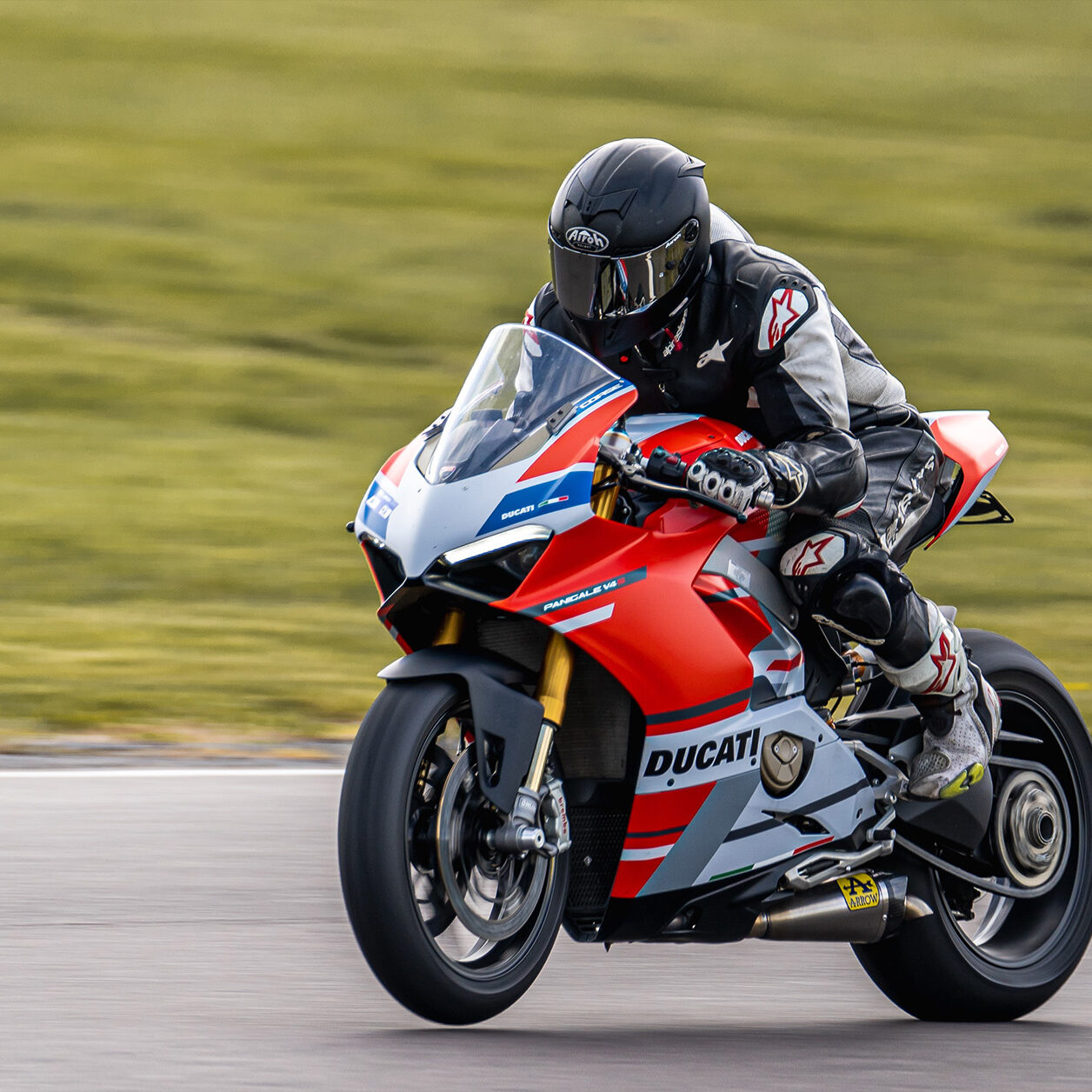Need help or advice? Check our frequently asked questions.
DP sintered pads are made of a complex mix of metallic powders (to absorb heat), refractory material (to provide friction), friction modifiers (to alter feel), graphites (to minimise rotor wear and eliminate noise), mixed together, pressed to form the shape, then sintered at high temperature and pressure.
Soft and Hard reflects tyre technology, this is a common error people make. The physical hardness of the pad does not generally determine its performance characteristics. It is assumed (wrongly) that a soft pad will produce high friction and high wear. The converse is assumed for hard pads. However if you were to measure the physical hardness of a pad, that measurement would not tell you how it would perform. A more reliable indicator is its friction rating, but more of that later.
Wearing earplugs will cure brake noise 🙂 but you will still cause dogs to bark and the police to notice you. Brake noise or squeal is due to vibration that sets off a harmonic frequency within the brake system. You can take steps to reduce noise, the most common fitting is an anti squeal shim or greasing the abutment sides of the pad and making sure corrosion etc has not caused pads or caliper to jam. The trick however is to make sure the pad is compatible with the rotor. At DP we spend a lot of our R&D time making sure the pads are quiet. We do it by use of complex graphites that are mixed so that they are present at each layer of the pad, so the pad stays quiet even when it wears. It's called IGGS, inter granular graphite structure and its difficult and expensive to achieve which is why only DP and the OEM do it.
Insulation Braking destroys Kinetic Energy, which produces heat. Heat is great if you live in Britain because we never experience it, however it can be bad news for brakes. The brake system has to be engineered to cope with heat. For our DP pads we use a layer of ceramic bonded onto the back of the brake pad. Some sintered pads have no heat barrier. These are OK for low speed but will transmit heat to the caliper fluid and seals if worked hard. Other sintered pads use a stainless radiator shield to reduce heat flow. It is stated that this is the way to go because it's used by the OEM. However although it does provide a measure of insulation the main advantage is that it is cheap to do. That's why the OEM do it. We don't; because the best way to prevent heat transfer is a bonded ceramic. Ask the guys in the space shuttle if ceramic tiles stopped severe sunburn. We have adapted this technology for DP pads. It's a trick and it works. It keeps the fluid cool and the pads hot. As sintered pads like being warm there is a benefit all round.
Ever noticed two letters on the back of a pad? Normally it is GG or HH. Friction rating is measured by the torque produced (directly related to friction) by a pad material rubbing at a defined load against a cast iron drum. The torque is measured cold and hot and the friction level equates to a letter. Letter A is low friction, letter H is the highest. So a HH pad is more powerful hot and cold than a GG pad.
Only attempt to fit new brake pads if you know what you are doing. If you are in any doubt get a professional mechanic to do it for you! Firstly, removal of the worn pads. Follow instructions in manufacturer's handbook. Make sure the caliper pistons are free to push back easily. Before you push them into the caliper body clean off any road dirt or corrosion. This will maintain the life of the caliper wiper seal. If there is any evidence of corrosion or stiction preventing easy movement of pistons, the pistons will have to be removed for cleaning or in severe cases replaced. This is the job of a skilled mechanic. It is good practice to lightly smear the edges of the pads that abut the caliper body with grease. Take care to use a proprietary high melting point grease and use sparingly, making sure the friction material and rotor remain clean. If the caliper is of the floating variety make sure it floats easily. The main culprit is usually corrosion causing the caliper pins to stick. Any sign of corrosion or dirt should be removed. Once the caliper pistons are pushed back it should be an easy task to replace the pads. If sintered pads have been fitted as original equipment replaces with sintered. The brake system has been designed to work with a sintered pad not a semi-metallic or Kevlar based pad. Make sure the caliper retaining pins are clean and smear a quality high melting point grease on the threads before you tighten. This will help removal at next pad change. Use the opportunity at pad change to inspect the rotor. The rotor will usually have a minimum thickness stamped into the carrier. If the rotor is showing signs of wear, measure the thickness and check against the manufacturers minimum thickness. If it is below, then it needs replacement. It is generally a good practice to clean the rotor at pad change. Use a fine grade abrasive paper and clean off any pad deposits or corrosion. You can finish off with a contact cleaner but make sure it is one that does not leave an oil film. Brake fluid is usually ignored but is vitally important. Brake fluid does degrade with time and it is best to replenish it at least every two years or sooner if you have experienced brake overheating problems. Use the specification and grade that the manufacturers recommend. Remember brake fluid is corrosive and can cause paint damage. You can use a proprietary brake bleeder but whatever method make sure you flush all the old fluid away. If after bleeding the lever feels mushy start again and make sure all the air bubbles are removed. Sometimes it helps if a friend can assist.
Carbon is a very unusual brake material. It has a very low friction level when cold or wet and a high friction level when hot. Also friction level tends to be non-linear, so it kicks in when a certain temperature is reached. Carbon also becomes mechanically stronger when hot. It can operate well at an elevated temperature so protecting caliper etc from high temperature is important. The pads are usually the same material as the rotor. Carbon is expensive with a capital E. Its main advantage is its very lightweight resulting in a low unsprung mass making the bike easier to turn.

